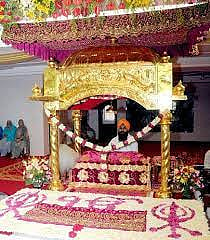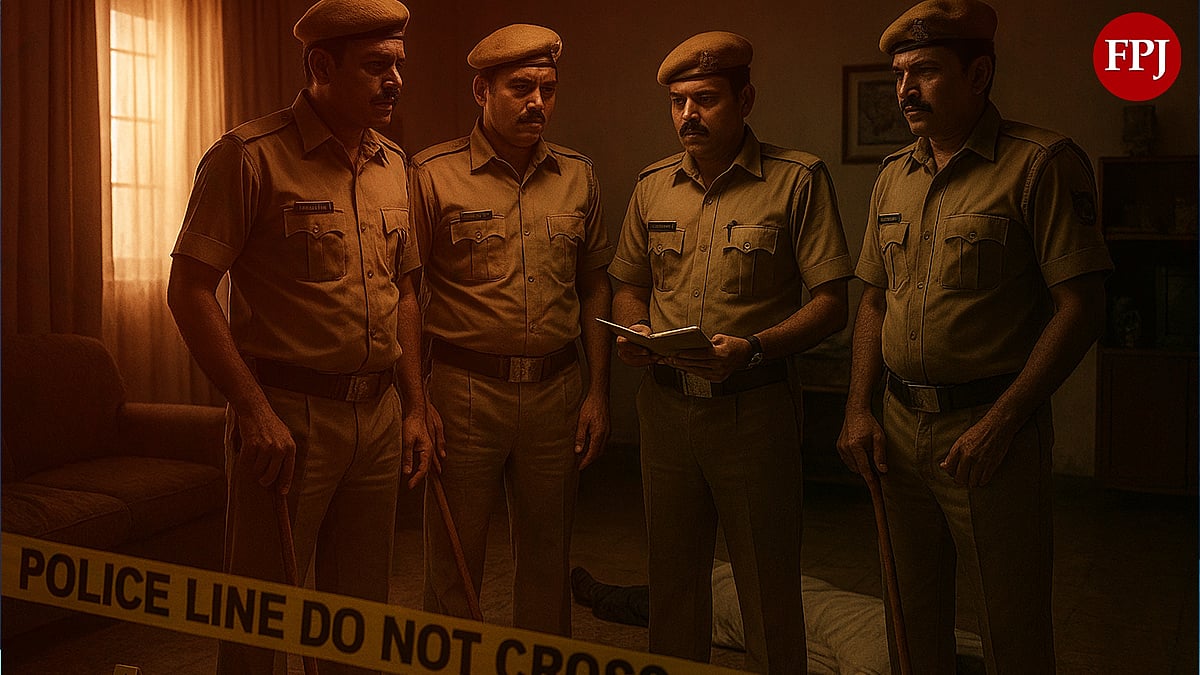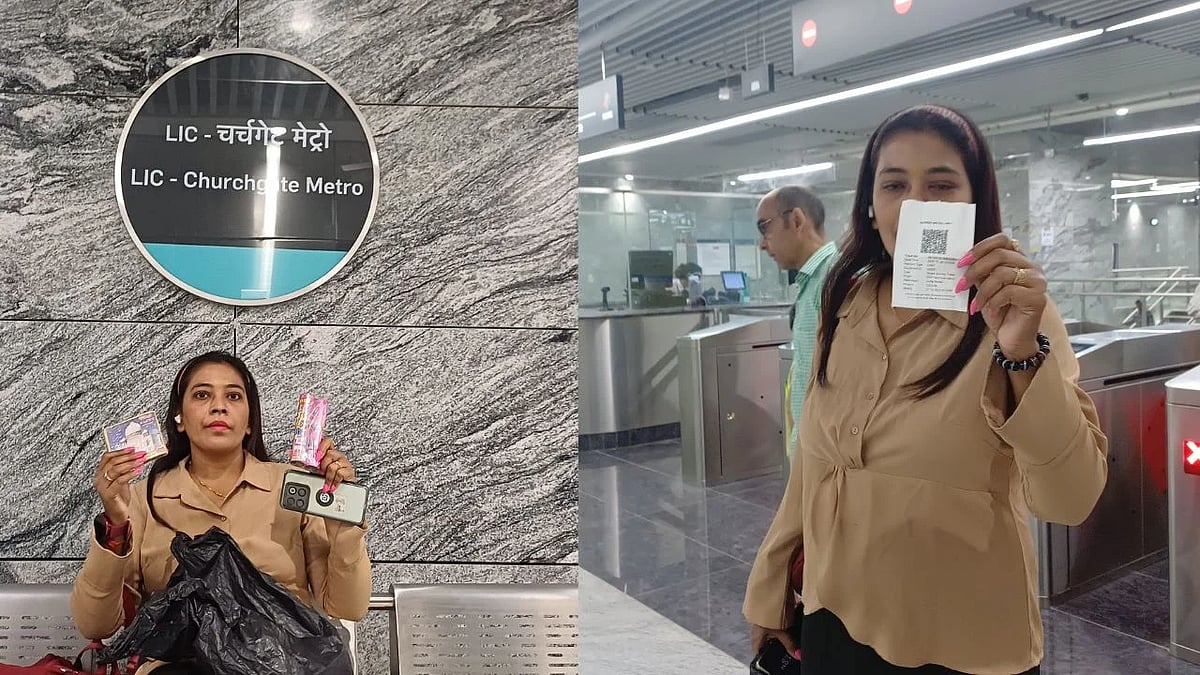Mumbadevi Temple

Mumbadevi Temple |
Located in the narrow alleys of Bhuleshwar, in South Mumbai, Mumba Devi temple is one of the oldest religious sites of the city. The original temple was first erected at Bori Bunder, where the present day Chhatrapati Shivaji Maharaj Terminus (CSMT) is situated. Later, during the 18th century, it is believed that the temple was destroyed by invaders, following which a new temple was constructed at Bhuleshwar.
This temple is dedicated to Goddess Mumba, who is known as the local incarnation of Parvati (also known as Gauri) or Devi. The Goddess personifies Mother Earth and Strength (Shakti) and is known to be the city’s guardian deity. The Goddess is referred to as “Aai” amongst the local Marathi, Koli, Gujarati and Kokani people, who are known to be the original inhabitants of the city. According to local legends, a demon named Mumbaraka used to trouble the people of the city, following which Lord Brahma had sent an eight-armed Goddess – Mumba Devi. The demon bowed to the goddess and accepted defeat and later, built a shrine for her. Following which, the temple came into existence.
The city of Mumbai, was officially renamed after Mumbadevi in 1995, after it was known as Bombay for several decades. It is said that the then British Government had named the city – ‘Bombay’ by anglicizing the term.
Locals say that during the pre-Covid-19 days, more than five thousand pilgrims used to visit the temple regularly. The temple is also known for its grandeur during the Navratri festival. The morning Arati is also a vibrant ritual, which is popular amongst tourists and visitors.
Siddhivinayak Temple

Siddhivinayak Temple | BL Soni
Located in Mumbai’s Dadar area, Siddhivinayak Temple is one of the most popular religious sites not only for Mumbaikars, but also for tourists visiting the city from various parts of the country and globe.
The temple is dedicated to Lord Ganesha and the name Siddhivinayak means - Ganesha who grants you wish. The deity is placed exactly at the center of the main sanctum. The wooden doors of the sanctum are carved with images of Ashtavinayaka – the eight manifestations of Lord Ganesha and the inner roof of the sanctum is plated with gold. Within the periphery of the main temple, there is a temple of Hanuman as well.
The Siddhivinayak temple is famous amongst politicians and stars from the Hindi and Marathi film industry, who frequently visit the temple premises to seek blessing of the deity. Locals believe that the wishes made by the devotees at the temple, gets fulfilled in some point of time for their lives, the temple is managed by Shree Siddhivinayak Ganpati temple trust and during the pre-pandemic days, more than ten thousand devotees used to visit the temple daily.
The temple is said to be constructed back in 1801 and the construction was funded by a rich Agri woman – Deubai Patil. Legends say that Deubai was childless due to infertility and that she had built the temple so that Ganesha would bless the infertile women with children. The original structure of the temple was a small 3.6 metre x 3.6 metre dome shaped structure made of brick, which was gradually developed during the twentieth century.
Haji Ali Dargah

Haji Ali Dargah |
Located on a islet off the coast of Worli, in south Mumbai, the Haji Ali is one of the oldest Islam shrines not only in Mumbai, but also in India. The shrine is considered to be one of the primary examples of Indo-Islamic architecture and is built approximately 600 meters away from the mainland, on a tiny islet in the middle of the Worli Bay. A causeway connects the Dargah with the mainland and accessibility to the Dargah is dependent on tides. During the high tide, the causeway becomes submerged, due to which the main Shrine is accessible only during the low tide.
One of the architectural marvels of the Dargah is that it is built in such a way that despite being close to the water body, the Shrine never got submerged in the sea-water. The Dargah is said to have been built in 1431, in the memory of a Muslim merchant – Pir Haji Ali Shah Bukhari. Bukhara hailed from modern day Uzbekistan, then known as Bukhara and travelled around the world in early to middle of 15th century and eventually settled in Mumbai.
Bukhari lived a pious life and throughout the journey he preached about Islam. According to legends before death Bukhari had advised his followers that they should not bury him at any proper place or graveyard and should drop his Kafan in the ocean, such that it should be buried by the people where it is found.
His wish was obeyed by his followers. That is why the Dargah is built at the very site where his Kafan came to rest in the middle of the sea where it became stagnant on a small mound of rocks rising above the sea. According to managerial officers of the Dargah, the shrine is visited by thousands of pilgrims, irrespective of their religion. Before the pandemic, during Thursdays and Fridays, more than five thousand visitors used to visit the Dargah every week.
Mahim Dargah

The Mahim Dargah is named after Makhdoom Ali Mahimi Shafi, one of the oldest Sufi Saints, to have been born in the island city, who have been known to play a phenomenal role in spreading the Sufi culture to parts of western India. It is believed that the Dargah was built sometime during the middle of the fifteenth century and pilgrims from different religions have been visiting the Dargah since decades. It is also believed that Mumbai’s neighborhood, Mahim, is also named after the Sufi saint.
Saint Mahimi is known for writing a critical explanatory of the Quran and he is known as the first commentator of Quran in India.
Hundreds of devotees visit the Mahim Dargah during the annual ten-day Urs festival, celebrated as per the Islamic calendar. More than eight thousand pilgrims take part in a procession during the festival, which begins at the Mahim police station, which is believed to be the site of his residence. As per the rituals, during the first day of the festival, the holy Chaddar (Shawl) is offered to the shrine by a representative of the Mumbai Police Department. Legends say, it was a police constable who offered water to the dying saint from his cap. One of the chambers of the police station contains a steel cupboard that houses the Saint's preserved belongings such as his chair, a pair of sandals and his hand-written Qur'an.
After his death in 1431, he was buried in Mahim. The site later became a Dargah (shrine) for devotees.
Knesset Eliyahoo Synagogue

Image Source: PTI /Shashank Parade |
Located at the Kala Ghoda neighborhood at Fort, in South Mumbai, this is one of the oldest Jewish Syanogogue in the city also known as Blue Synagogue for its turquoise color. Built by Jacob Eliyas Sassoon, grandson of David Sassoon, a leader of the Jewish community in India, who had immigrated in 1832 from Baghdad, due to persecution. The Synagogue is located at a site, which had a significant Baghdadi-Jewish population earlier. The building is considered to be an architectural marvel and was designed by British architectural firm then known as Gostling and Morris of Bombay.
The construction of the building was completed in 1884 and is constructed with stone and brick masonry. According to locals, the Synagogue was not originally blue in color and was first built as a white structure with indigo borders. The original color of the Synagogue was restored in 2019.
Inside the synagogue there are pillars carved with architectural designs and the sanctum inside the building faces west towards Jerusalem. There is a reader’s platform (Bimah) inside the building, made with carved marble. There is also a arch made of arch, over the platform. Women worshippers sit in a gallery, upstairs. The synagogue contains a number of religious scrolls, along with religious books and scriptures kept inside silver cases belonging to the Sassoon family.
Maneckji Seth Agiary

Maneckji Seth Agiary | Photo: Wikipedia
Maneckji Seth Agiary is the second-oldest Zoroastrian fire temple or agiary-house of fire in Mumbai. The temple, located at the Perin Nariman street near CSMT, was constructed in 1735. It is the second oldest among the 50 fire temples scattered across Mumbai with Banaji Limji Agiary, Fort established in 1709, being the oldest.
By the beginning of the 19th century, the Parsis were almost ten thousand in population in Bombay city. In this settlement, the second place of worship came up in 1735 AD. But the Great Fire of 1803 AD, burnt down the initial fire temples.
After the fire ravaged the temple, the community came together for the reconstruction to donate in cash and kind. Some members of the Parsi community contributed eggs and hundreds of toddy mugs. These ingredients were churned along with the construction material as an act of faith to strengthen the foundation. The walls were strengthened and the temple stands today at Perin Nariman Street.
The most striking and a common feature found in all Zoroastrian edifices, is the five-legged Lamassu, a symbol of the five senses. With the head of a wise man, and the body of a bull or lion, and the wings of an eagle, the Lamassu is a symbol of wisdom, intelligence, courage, strength and above all, the vision to soar up in the sky.
As in all Zoroastrian temples, non-Parsis are not allowed to enter. The architecture of the building is a mix of Persian and Greek Revival styles, with two lamassus standing guard at the temple entrance.
Sri Guru Singh Sabha Gurudwara

Photo: Facebook
Over 300 people are served free meals every day at Sri Guru Singh Sabha Gurudwara, Bandra-Khar without any discrimination or judgement. Being Mumbai’s oldest Gurudwara, this place of worship and service was established between 1945-66 at Bazaar Road, Bandra west. Later, a new structure was built in 1958 at Khar under the same name.
Since 550 years, Sikhs have been serving food and water to the needy in their place of worship called 'Gurudwaras'. Following the steps of their leader Guru Nanak, members of the Sikh community serve langar or free meals through community kitchens in Gurudwaras across the world.
'Recognise the whole human race as one' is the message put forth by the members of the Gurudwara and the Sikh community. Volunteers comprising students, youth, women and senior citizens come to help and prepare meals. Volunteers help in chores such as cutting vegetables, preparing rotis, sweets and cooking complete meals while some people help in washing plates, glasses and cleansing utensils.
The Gurudwara is open 24x7 for people of all caste and community. Till date, it has never run out of resources or financial aid to serve free meals to the people. The Gurudwara has visitors who come from near and far and donate.
The Gurudwara also houses a free school on its premises where around 900 students are studying the board affiliated to the Council for the Indian School Certificate Examination (CISCE). The members also conduct free medical camps, health check-ups and awareness campaigns while focusing on hunger and education to help the community at large.
Holy Name Cathedral, Colaba

Holy Name Cathedral |
The Cathedral of the Holy Name or Holy Name Cathedral is a Roman Catholic cathedral situated on Wodehouse Road, opposite YMCA, Colaba, Churchgate. The cathedral which dates back to the colonial era is the headquarters of the Roman Catholic Archdiocese of Bombay where the Archbishop of Bombay is seated.
The cathedral, built in the Gothic Revival style, is situated at the premises of the Holy Name High School, Colaba founded in 1939. It was the result of an agreement between the Archbishop and the “Bombay Improvement Trust”. Mr. W.A. Chambers was hired by Archbishop Dalhoff to erect the structure that would consist of a church, school and residential area. The plan for the church was approved on November 21, 1901 by the Bombay Trust and the ‘foundation stone’ of the building was laid on July 9, 1902.
The Church of the Holy Name was finally opened for the public to worship on January 15, 1905. The church attained the status of a cathedral in March 1964. In 1998, the church was declared a heritage building. Since then it has been serving thousands of devotees coming from different places across the globe.
Apart from the devotional aspect, the cathedral is known for its massive structure and fine architecture being a part of the heritage building. It has massive carved doors, a marble main altar and a central niche which holds a life-size statue of Jesus Christ.
Fresco, a technique of mural painting, covers the ceiling and walls. A. Moscheni of Bergamo and his two assistants completed the frescoes in just over a year. In this unique painting, the artist applies paint directly on freshly laid lime plaster, the paint permeates the plaster. Once the plaster settles, the painting merges with the wall. The word fresco is derived from the Italian word affresco meaning fresh.
St Peter’s Church, Bandra
A home to several Bandraites, the iconic St Peter’s Church is situated at Hill Road, Bandra west. The new St Peter’s Church, Bandra has been built on the site of the old and has been designed in the Romanesque style. The foundation stone of the present St Peter’s Church was laid in September, 1938 by the Archbishop Thomas Roberts, Society of Jesus (S.J.).
The whole church building measures 130 feet by 80 ft. The Urban Development Department of the Government of Maharashtra has listed the Church as a Grade II heritage structure. In 1995, the church was awarded the prestigious Urban Heritage Award.
The church is part of the Mumbai archdiocese. Adjoining the church lies one of the largest schools in Mumbai by area St. Stanislaus High School. The primary and secondary school is spread over a campus of approximately seven acres (three hectares).
Recently, the funeral service of Jesuit priest and tribal rights activist Father Stan Swamy, 84, was conducted on July 6, 2021 at St Peter's Church, Bandra west and broadcast online via its Youtube channel.
Last year in April, the church along with the St Stanislaus School, Bandra started a relief camp for migrant workers and labourers providing food, shelter and a source of livelihood during the lockdown necessitated by the Covid-19 pandemic.









